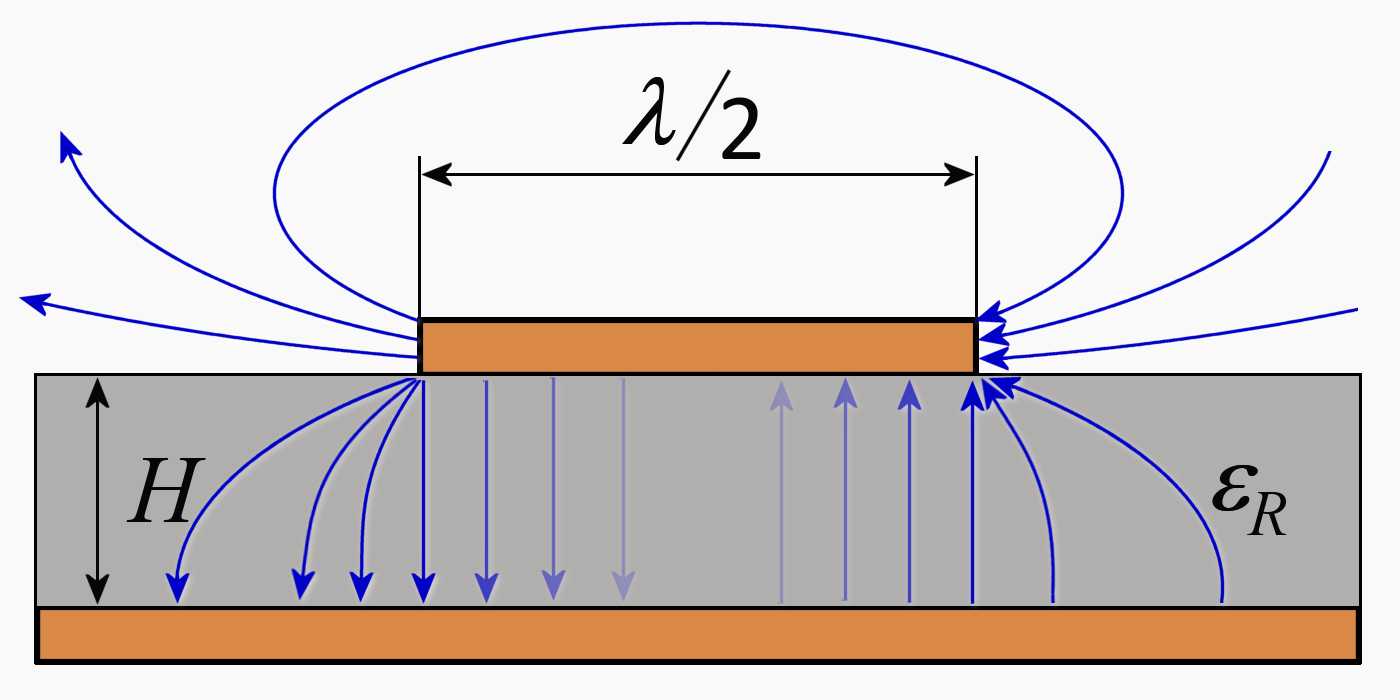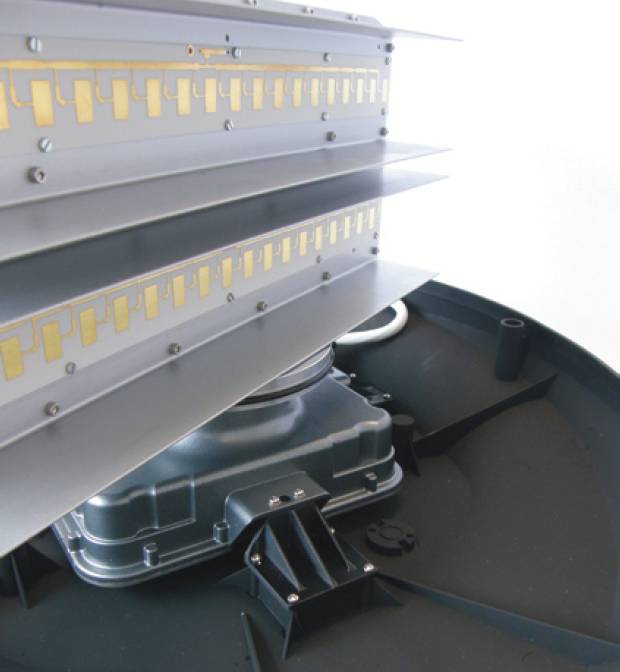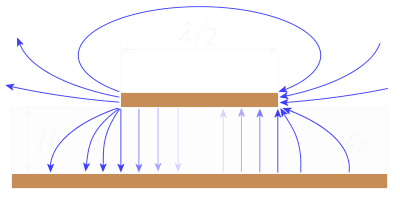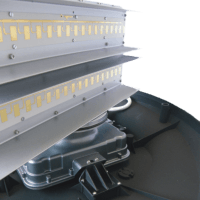Patch Antenna or Microstrip Antenna

Figure 1: Cutaway view of a simple patch antenna
Patch Antenna or Microstrip Antenna
A patch antenna or microstrip antenna is a narrowband, wide-beam antenna. It is also-called printed antenna. It has two dimensional physical geometry. The simplest patch antenna uses a patch which is one-half wavelength long, so that the metal surface acts as a resonator similarly to the half-wave dipole antennas. A patch antenna is usually fabricated by mounting a shaped metal sheet on an insulating dielectric substrate, such as a printed circuit board, with a continuous metal layer bonded to the opposite side of the substrate which forms a ground plane. Hence it is easy to design and inexpensive to manufacture. Some patch antennas do not use a dielectric substrate and instead made of a metal patch mounted above a ground plane using dielectric spacers. The resulting structure is less rugged but has a wider bandwidth. Patch antennas can be designed from the UHF band to as high as 100 GHz.
Common patch antenna shapes are square, rectangular, circular and elliptical. However the shape is not restricted. Any continuous shape is feasible. Patch antennas are mechanically rugged and can be shaped to conform to the curving skin of a vehicle. They are often mounted on the exterior of aircraft and spacecraft, or are incorporated into mobile radio communications devices. They have high polarization diversity and can be used for multiple feed points.

Figure 2: The patch antenna array of a maritime FMCW navigation radar in X-band
Advantages
- High accuracy in manufacturing, the design is executed by Photo etching.
- Easy to integrate with other devices.
- Small sized applicable for handheld portable devices.
- We can obtain high directivity using microstrip arrays.
- An array of microstrip antennas can be used to form a pattern that is difficult to synthesize using a single element.
- Smart antennas when combined with phase shifters or PIN-diode switches.

Figure 2: The patch antenna array of a maritime FMCW navigation radar in X-band
Disadvantages
- Narrow band width (1%), while mobiles need (8%).
- Low efficiency, especially for short circuited microstrip antenna.
- Some feeding techniques like aperture and proximity coupling are difficult to fabricate.
- An array suffers presence of feed network decreasing efficiency.
Microstrip antennas occurred during the 1980s. Initially it was a military development, at the cost did not matter. In the 1990s this technology has also been adopted for devices for communication as a low-cost technology. But the performance of a microstrip array was well below that of a reflector antenna.
Microstrip Antennas
- are preferred for low directivity applications;
- have lower efficiency;
- suffers low efficiency caused by feed network for arrays;
- are suitable for smart antennas; if combined with phase shifters then they can provide electronic scanning;
- allow more accurate manufacturing by photo etching;
- feeding is by coupling or coax feed lines.
Reflector Antennas
- are performed for high directivity applications;
- have higher efficiency;
- suffers blockage caused by fixation Struts;
- uses mechanical scanning;
- have less accuracy, sometimes parabolic surfaces are rough;
- use other antenna (dipole, monopole, apertures, etc) as a feed.


